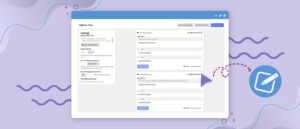Phishing Test for Employees – Why its Important
Published on: 25 Sep 2017
Last modified on: 11 Nov 2025

Understanding Phishing Attacks: Why Employee Awareness Is Crucial
In the first quarter of 2025, the APWG Phishing Activity Trends Report recorded 1,003,924 phishing attacks, the highest quarterly total since late 2023. Cybercriminals are increasingly using QR codes in emails to redirect victims to phishing sites or malware. The SaaS/Webmail sector was the most targeted industry (18%), while the financial sector—including payment, banking, and crypto—accounted for 30.9% of all attacks. Additionally, wire transfer BEC attacks rose by 33% compared to the previous quarter.
What is a Phishing Attack?
Phishing emails are carefully designed to grab attention and prompt immediate action, often tricking recipients into clicking malicious links or opening harmful attachments. On average, phishing sites remain active for less than 15 hours, making it challenging for organisations to detect and block them promptly. To make matters worse, nearly 100% of phishing URLs appear within legitimate domains, giving them an air of authenticity and trustworthiness.
This sophisticated approach makes phishing attacks extremely dangerous. They often arrive disguised as harmless emails, urging recipients to act immediately. Unfortunately, once a recipient clicks a malicious link or opens a dangerous file, the consequences—financial, operational, and reputational—can be severe.
The Importance of Employee Phishing Awareness
Even if most employees are familiar with the common signs of phishing emails, it only takes one individual clicking a malicious link or opening a harmful attachment for a cyber attack to succeed. Cybercriminals are constantly evolving their tactics, making emails increasingly convincing and difficult to detect. For this reason, regular phishing simulations and continuous awareness training are essential for every organisation. By routinely educating employees on the latest threats and testing their responses, companies can significantly reduce the risk of financial loss, data breaches, and reputational damage caused by phishing attacks.
Phishing Test: How to Spot a Fake Email
A common phishing tactic involves emails pretending to be from services like PayPal. Many people may instinctively click these emails without verifying their authenticity. Through regular phishing exercises, employees can learn to identify key warning signs, such as:
- Sender address verification: Does the “From” field match the legitimate company address?
- Grammar and spelling errors: Established companies rarely send emails with obvious mistakes.
- Generic greetings: Legitimate messages often include the recipient’s name instead of generic terms like “Hello PayPal Customer.”
- Scare tactics: Phishing emails often use alarming messages, e.g., “Your PayPal Account is Limited,” to prompt urgent action.
By routinely conducting phishing simulations, employees strengthen their ability to recognize these red flags. However, cybercriminals continually evolve, often bypassing standard warning signs, which is why ongoing cybersecurity training is critical.
Why Phishing Training Matters
While phishing prevention may seem simple, consistent employee training remains one of the most effective defenses against cybercrime. Teaching staff what to watch for empowers them to identify and avoid phishing emails, safeguarding both themselves and the organisation.
No single solution can completely eliminate phishing threats—but combining human awareness with advanced cybersecurity tools drastically reduces risk. Platforms like MetaCompliance’s Human Risk Management offer automated security awareness, advanced phishing simulations, and targeted training to protect your organisation from social engineering attacks.
FAQs About Phishing Testing and Employee Training
Why are phishing attacks so effective?
Phishing attacks often appear as legitimate emails, use urgent language, and exploit human trust, making even cautious individuals vulnerable.
How long do phishing websites stay active?
Most phishing sites are live for less than 15 hours, making rapid detection and response critical.
What are the common signs of a phishing email?
Look for generic greetings, poor grammar, suspicious sender addresses, and scare tactics prompting urgent action.
How can companies protect against phishing?
Regular employee training and phishing simulations are essential to help staff recognize and avoid phishing attempts.